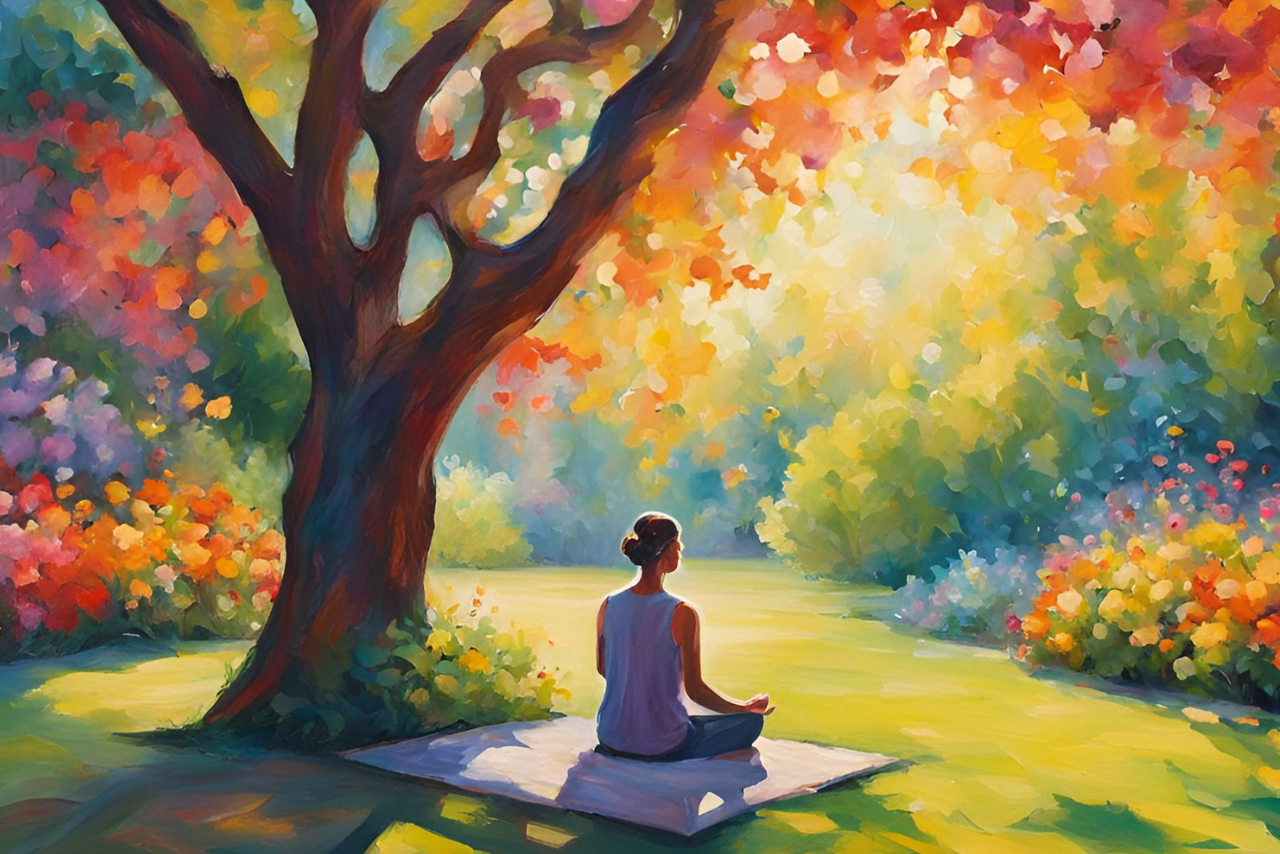“If nothing changes, nothing will change. If you keep doing what you’re doing, you’ll keep getting what you’re getting. If you want change, make something happen.” ~Courtney C. Stephen vinegar
If someone looked at my life when I was younger, they would think I was doing everything well. I went to college to get a bachelor’s degree in psychology and social work, and then a master’s degree in social work. I have always had good friendships and family relationships. I traveled regularly. I was and still am young and living my life. Little did they know there was so much going on inside…
Before I developed chronic pelvic pain in college, I was experiencing a perfect storm of overachievement, perfectionism, stress, and anxiety.
As an overachiever, I ended up completing all my homework and essays a week before they were due because waiting until the last minute would make me even more anxious. I always wrote more pages than necessary for assignments. I ended up studying more than I needed to. I was always the one who did the best.
Being a perfectionist, I cried a lot the first time I got an 88% in my child development class. When I got a 20 on the ACT, I rolled my eyes, thinking that I wouldn’t even be able to get into college with that score.
anxiety. I was filled with anxiety. Constant worry, anxiety, and catastrophizing, muscle tension throughout the body, sleep problems, and extreme restlessness.
It’s the perfect storm.
After completing my master’s degree, I began working in the field of community mental health in order to earn the 3,000 clinical hours required to qualify as a clinical social worker.
During this time I was going from doctor to doctor trying to understand what was going on with my body. I was looking for every solution under the sun. After working at my first job for about a year, I finally found it. I was so burnt out, anxious, and in pain that I took a vacation and went to California.
There was a clinic in California that specialized in chronic pelvic pain and anxiety. I thought, “Finally, I’ve found a place where I can get help.”
Thus began my meditation journey. I can tell you now that the trip changed my life. I don’t know what I would have done without this powerful practice.
Let’s imagine what the clinic looks like. I was in a room with about 8 to 10 other people who suffer from anxiety and chronic pelvic pain, and I was lying in what looked like a sleeping bag, like a caterpillar in a cocoon.
The psychologist at the clinic began to teach us how to meditate.
He began a guided meditation without a script and told me to focus on the “sinking” sensation, the “aha” feeling as I exhaled. Can you imagine how difficult it would be if your anxiety and pain were off base?
After what felt like 30 seconds of this exercise, my first thought was: That’s all for today. Time to go! ! ”It was like torture for me, full of anxiety, millions of thoughts running through my head, lying in excruciating pain. I thought it was going to explode.
The worst part was that he continued. I don’t remember how long the meditation lasted. It felt like it lasted 12 hours when in reality it could have been over in 10 or 20 minutes. Throughout the rest of the clinic, we continued to repeat this guided meditation, and to be honest, I kept feeling sick.
Through hard work and practice, it took me a year and a half to be able to do 45 minutes of guided meditation twice a day. I can tell you now that my meditation practice saved my life and dramatically calmed my nervous system and anxiety.
Here are the lessons I learned through my meditation journey.
1. Start small.
When you want to start something new or create a new habit, start small. Starting big is tough. I find it easier to manage if I start small.
When I first started meditating, I started with a few minutes and gradually increased the time. After a few months, I was able to meditate for 45 minutes, which continued for 10 minutes, then 15 minutes, then 20 minutes, and it felt like only 15 minutes had passed.
Be kind to yourself if it takes you a while to master the first few minutes. Like anything you do for the first time, meditation can be difficult when you first start. Make peace with being a beginner, knowing that you have a strong practice and that is all you need.
After doing this for over a year and a half, I feel calmer, more grounded, more aware of my thoughts, and more comfortable sitting with the sensations in my body. Now it looks like this.
2. If you want to change anything in your life, consistency over time is key.
Believe me, I struggled with consistency for a very long time. I’d try something new for three or four days, and then I’d think, “Oh, this isn’t working,” and stop doing it. I didn’t give the technique time to work.
I realized that this was the part of me that was impatient and wanted instant gratification and results. I always say this to clients I’ve worked with: Then I would live on a private island and have my own dolphin to play with. ” Wouldn’t it be great if life worked that way?
This has been a cycle for me for a very long time. It takes more than two months to form a habit. After I started experiencing the effects of meditation, I started making it a daily habit for my mental and physical health.
3. Change is unpleasant. Meditation was and still is comfortable.
Change sucks. Learning new things sucks. I also learned that in that moment, you can do something that will be difficult and ultimately help you, or you can stay stuck. I had a choice and I knew I couldn’t stay trapped in extreme anxiety and chronic pain. Even though I felt uncomfortable, I knew something had to change.
“Life is the difference between what hurts and what hurts more.” ~Nicole Sachs, LCSW.
Meditation was very uncomfortable at first. My brain felt like a ping pong game with so many thoughts and sensations happening inside my body. While meditating, I was so distracted by anxious thoughts and pain that it was very difficult to focus on the sinking sensation in my body. As time went on, it got easier to the point where I could just focus on the sensation of sinking and my breathing. As with everything in life, practice makes progress.
I won’t meditate for 45 minutes anymore. I meditate for 10 minutes every day using the Calm app. There are still days when it’s hard to focus on my breathing because of the anxiety, pain, and thoughts running through my head.
Just like in life, there are moments when each day gets harder or easier. What has helped me is accepting whatever is happening in the moment, but it also takes practice. When I found meditation difficult for myself, I created compassion for myself. No judgment. I’m human.
4. You cannot run away from your mind and body.
What I have learned from my meditation practice is that I cannot run away from what is going on in my mind and body. Your mind and body will let you know a thought or sensation until you can fully sit with it and accept it in the moment, rather than sweeping it under the rug out of discomfort or fear. continue to give.
It’s uncomfortable and scary. By running away from it, you are reinforcing the pattern and signaling to your brain and nervous system that the thoughts and sensations in your body are a threat.
During my meditation practice, I had to sit with everything that was happening to my body. It was everything: intense pain, tightness in my chest, an upset stomach, thoughts of what-if in my mind, tightness in various parts of my body. I had to feel everything.
At first I hated it and it was the worst, but it gradually got easier. I had to learn to accept my body and its protection. Because that’s what your body is doing. That acceptance turned into compassion, and the symptoms were reduced.
Your body and brain will continue to produce symptoms until you process them, accept them, and turn off the red flags.
Just like anything else, with time and practice, it gets easier.
If you have chronic pain, consult a medical professional to rule out any structural problems in your body. I’ve had every test and scan under the sun, and physically my body is and still is normal. And if you have anxiety and need support, there are many great places to get support, including therapy and online forums.
About Gabby Wenek
Gabby Wenecke is a licensed clinical social worker and burnout and anxiety coach. Through her coaching services, Gabby helps anxious and burnout women increase burnout awareness, how to make changes to reduce burnout, and unique skills and techniques for dealing with anxiety and stress. Supports how to build “official”. Get her free guide “5 Tips You Need to Know to Overcome Burnout, Anxiety, and Stress” at gabbywnekcoaching.com.





